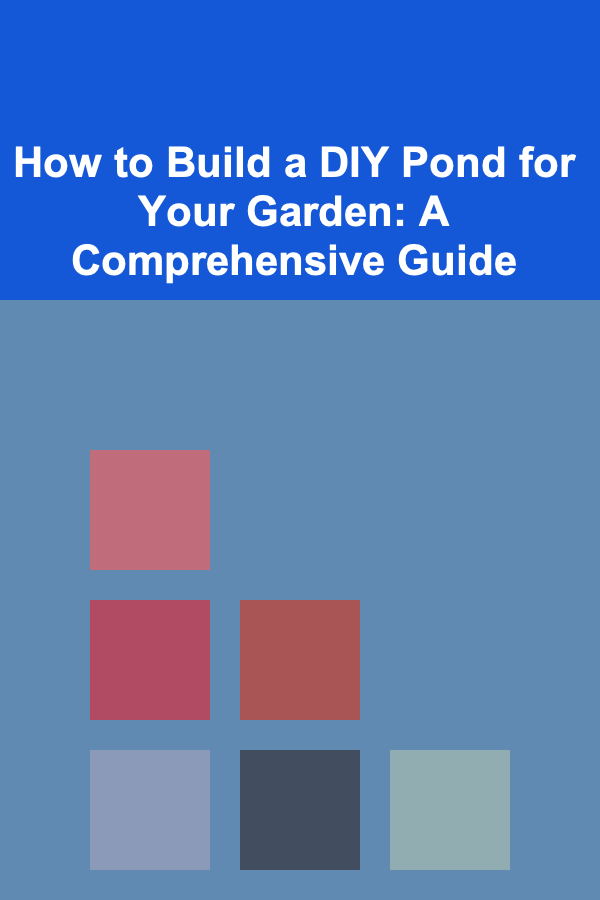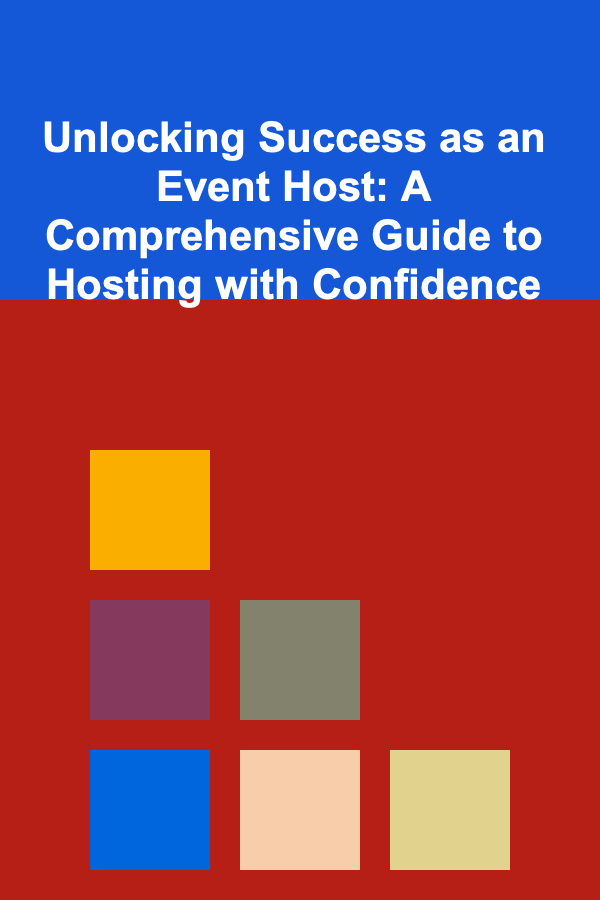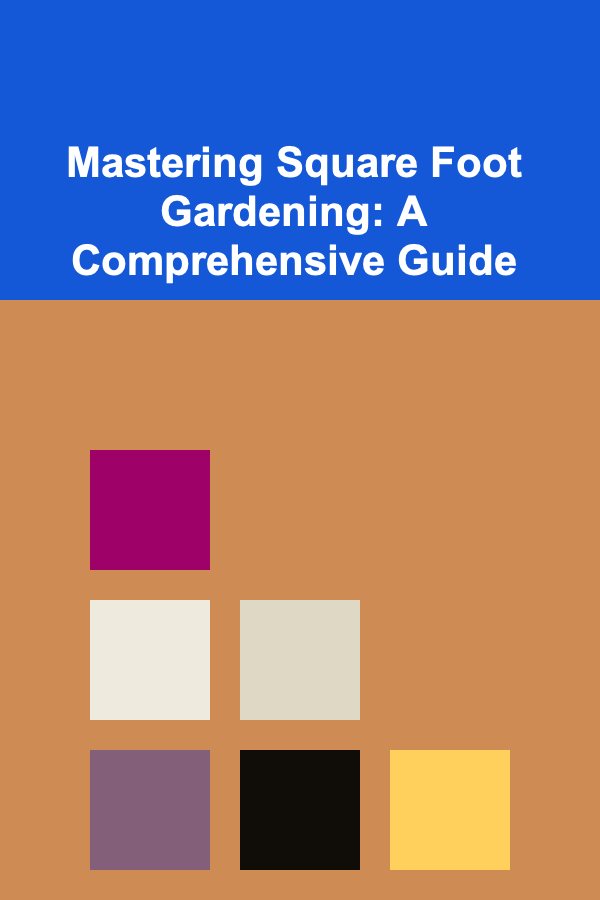
How to Build a DIY Pond for Your Garden: A Comprehensive Guide
ebook include PDF & Audio bundle (Micro Guide)
$12.99$8.99
Limited Time Offer! Order within the next:

Creating a pond in your garden is a rewarding project that can transform your outdoor space into a tranquil oasis. A pond can attract wildlife, enhance the aesthetic appeal of your garden, and provide a relaxing focal point. While it might seem daunting, building a DIY pond is achievable with careful planning, preparation, and execution. This comprehensive guide will walk you through every step of the process, from initial planning to final touches, ensuring your pond becomes a thriving ecosystem.
I. Planning and Design: Laying the Foundation for Success
Before you even think about digging, careful planning is crucial. A well-thought-out design will not only save you time and money but also ensure the longevity and health of your pond.
A. Determining Pond Size and Shape
The size of your pond will largely depend on the available space in your garden, your budget, and your desired features. Consider the following factors:
- Available Space: Evaluate your garden and determine the area suitable for a pond. Remember to account for surrounding plants and potential future landscaping. Too large a pond in a small garden can feel overwhelming, while a tiny pond in a vast space might look insignificant.
- Budget: Pond building costs can range from a few hundred dollars for a small, simple pond to several thousand dollars for a larger, more elaborate design. Factor in the cost of the liner, pump, filtration system, plants, rocks, and any other decorative elements. Don't forget to budget for potential unexpected expenses.
- Desired Features: Do you envision a simple reflecting pool, a fish pond, a wildlife pond, or a pond with a waterfall? Each feature will influence the size and depth of your pond. Fish require a deeper pond to survive the winter in colder climates. Waterfalls need a source and return system, adding to the overall footprint.
The shape of your pond is another important consideration. Natural, organic shapes tend to blend better into the landscape. However, more formal, geometric shapes can be equally appealing, especially in modern or structured gardens. Consider these options:
- Natural Shapes: Kidney-shaped, oval, or free-form ponds mimic natural water bodies and create a relaxed atmosphere. These shapes allow for varied depths and planting zones.
- Geometric Shapes: Rectangular, square, or circular ponds offer a more formal and structured look. These shapes are often easier to excavate and can complement modern architectural styles.
Tip: Draw a scale plan of your garden and experiment with different pond shapes and sizes. Use garden hoses or spray paint to outline the proposed shape on the ground to get a better visual idea.
B. Choosing the Right Location
The location of your pond significantly impacts its health and maintenance. Consider these factors when selecting a site:
- Sunlight: Ideally, your pond should receive at least 6 hours of sunlight per day. Sunlight is essential for aquatic plants to thrive and for maintaining a healthy ecosystem. However, excessive sunlight can lead to algae blooms. A location with partial shade might be a good compromise.
- Proximity to Trees: While trees can provide shade, falling leaves can decompose in the pond, creating excess nutrients and potentially clogging your filtration system. Choose a location away from trees with excessive leaf drop, or be prepared for regular leaf removal. Roots can also damage the pond liner over time.
- Accessibility to Power and Water: If you plan to have a pump, waterfall, or lighting, you will need access to an electrical outlet. Similarly, having a nearby water source will make filling and topping off the pond much easier. Consider running electricity underground to maintain a clean aesthetic.
- Soil Type: Sandy soil drains quickly, which can make excavation difficult. Clay soil retains water well but can be heavy to dig. Loamy soil is ideal. Consider amending the soil if necessary.
- Underground Utilities: Before you dig, contact your local utility companies to locate any underground pipes or cables. This is a crucial safety measure. Most utility companies offer a free service to mark the location of buried lines.
C. Selecting a Liner: The Heart of Your Pond
The liner is the waterproof barrier that holds the water in your pond. Choosing the right liner is critical for preventing leaks and ensuring the longevity of your pond.
-
Pond Liner Materials: The most common types of pond liners are:
- PVC (Polyvinyl Chloride): PVC liners are affordable and relatively easy to install. However, they are less durable than other options and can become brittle over time, especially in extreme temperatures. They are suitable for smaller ponds and less demanding applications.
- EPDM (Ethylene Propylene Diene Monomer): EPDM liners are a more durable and flexible option. They are resistant to UV radiation, punctures, and tears. EPDM liners are more expensive than PVC but offer better longevity and are ideal for larger ponds and those in colder climates. They are generally considered the best choice for most DIY ponds.
- HDPE (High-Density Polyethylene): HDPE liners are the most durable and chemically resistant option, but they are also the most expensive and require professional installation. They are typically used for very large ponds or commercial applications.
-
Calculating Liner Size: To determine the size of liner you need, use the following formula:
Length = Maximum Pond Length + (2 x Maximum Pond Depth) + 2 feet (for overlap) Width = Maximum Pond Width + (2 x Maximum Pond Depth) + 2 feet (for overlap)For example, if your pond is 8 feet long, 4 feet wide, and 2 feet deep, you would need a liner that is at least 14 feet long and 10 feet wide.
II. Excavation and Preparation: Getting Your Hands Dirty
Once you have a solid plan, it's time to start digging. Excavation is the most labor-intensive part of the pond building process, but it's essential to create the desired shape and depth.
A. Marking the Outline
Use a garden hose, rope, or spray paint to mark the outline of your pond on the ground according to your plan. Double-check the dimensions and shape to ensure they match your design.
B. Digging the Pond
Start digging within the marked outline. Consider creating different depths and levels within the pond. This provides varied habitats for aquatic plants and wildlife. A shallow shelf around the perimeter is ideal for marginal plants. A deeper area is necessary for fish and to prevent the pond from freezing solid in winter. Use these guidelines:
- Shallow Shelf: 8-12 inches deep for marginal plants.
- Mid-Depth Zone: 18-24 inches deep for submerged plants and smaller fish.
- Deep Zone: 3-4 feet deep (or deeper in colder climates) for fish to overwinter.
As you dig, remove any rocks, roots, or sharp objects that could puncture the liner. Use a shovel, pickaxe, and wheelbarrow to remove the excavated soil. Consider using the soil to build up the surrounding landscape or create a berm around the pond.
C. Preparing the Pond Base
Once you have finished digging, it's crucial to prepare the pond base to protect the liner. This will help prevent punctures and ensure a smooth surface.
- Remove Sharp Objects: Thoroughly inspect the excavated area and remove any remaining rocks, roots, or sharp objects.
- Sand Bedding: Spread a 1-2 inch layer of sand over the entire excavated area. This will provide a cushion between the soil and the liner.
- Underlayment (Optional): Consider using a geotextile underlayment between the sand and the liner. This adds an extra layer of protection and helps prevent punctures from below. Old carpet or newspaper can also be used as underlayment in a pinch.
III. Installing the Liner: Waterproofing Your Oasis
With the excavation complete and the base prepared, it's time to install the liner. This step requires patience and careful attention to detail.
A. Positioning the Liner
Unfold the liner and carefully position it over the excavated area. Center the liner and allow it to drape over the edges of the pond. Ensure there is enough overlap (at least 1 foot) on all sides. This excess liner will be used to secure the edges and create a natural-looking border.
B. Smoothing Out Wrinkles
As you lower the liner into the pond, gently smooth out any wrinkles or folds. The weight of the water will eventually stretch the liner and remove most of the wrinkles. Try to work from the center outwards. Avoid creating tight folds that could weaken the liner.
C. Filling the Pond
Begin filling the pond with water. As the water level rises, the liner will settle into place. Continue to smooth out any wrinkles as the pond fills. Leave the liner edges loose until the pond is completely full.
IV. Setting Up the Filtration System: Maintaining Water Quality
A filtration system is essential for maintaining clean and healthy water in your pond. It removes debris, prevents algae blooms, and creates a suitable environment for fish and plants.
A. Choosing a Filtration System
There are several types of pond filtration systems available. The best choice for your pond will depend on its size, the presence of fish, and your budget.
- Mechanical Filtration: Removes solid debris such as leaves, twigs, and fish waste. This is typically achieved using a skimmer or a filter box with foam pads or filter mats.
- Biological Filtration: Removes harmful chemicals such as ammonia and nitrite through the action of beneficial bacteria. Biological filters often contain porous materials like lava rock or ceramic media to provide a surface for bacteria to colonize.
- UV Sterilization: Uses ultraviolet light to kill algae and bacteria, resulting in clearer water. UV sterilizers are often used in conjunction with mechanical and biological filters.
Consider these popular options:
- Pressurized Filters: Compact and efficient, suitable for ponds with a waterfall.
- Gravity Filters: Larger and more effective for larger ponds, typically placed outside the pond.
- Skimmers: Collect debris from the water surface, preventing it from sinking and decomposing.
B. Installing the Pump
The pump is the heart of the filtration system. It circulates the water through the filter and, if you have a waterfall, provides the flow for the waterfall. The size of the pump you need will depend on the size of your pond and the flow rate required by your filter and waterfall.
- Submersible Pumps: Placed inside the pond, typically at the bottom. These are generally easier to install.
- External Pumps: Placed outside the pond, often quieter and more energy-efficient. These require plumbing to connect to the pond.
Position the pump in a location where it will be easy to access for maintenance. Use a pre-filter or a mesh bag around the pump to prevent it from clogging with debris.
C. Connecting the Filtration System
Connect the pump to the filter using flexible tubing. Ensure the tubing is securely connected and properly sized for the pump and filter. If you have a waterfall, connect the outlet of the filter to the waterfall spillway.
V. Adding Plants and Decorations: Creating a Natural Habitat
Plants and decorations are essential for creating a healthy and aesthetically pleasing pond. Plants provide oxygen, filter the water, and provide shelter for wildlife. Decorations add visual interest and create a natural-looking environment.
A. Selecting Aquatic Plants
Choose a variety of aquatic plants to create a balanced ecosystem. Consider these types of plants:
- Marginal Plants: Grow along the edges of the pond in shallow water. Examples include irises, cattails, and marsh marigolds.
- Submerged Plants: Grow completely underwater and provide oxygen for fish. Examples include anacharis, hornwort, and water milfoil.
- Floating Plants: Float on the surface of the water and provide shade and cover. Examples include water lilies, water hyacinth, and duckweed. Be mindful of the invasive potential of some floating plants like water hyacinth.
Plant aquatic plants in pots or planting baskets filled with aquatic potting soil. Avoid using regular potting soil, as it can leach nutrients into the water and cause algae blooms.
B. Adding Rocks and Decorations
Rocks and decorations can add visual interest and create a more natural-looking pond. Use a variety of sizes and shapes to create a natural effect.
- Border Rocks: Place rocks around the perimeter of the pond to hide the liner and create a natural-looking edge.
- Underwater Rocks: Place rocks inside the pond to provide shelter for fish and other aquatic creatures.
- Gravel and Pebbles: Cover the bottom of the pond with gravel or pebbles to provide a substrate for beneficial bacteria to colonize.
- Other Decorations: Consider adding driftwood, statues, or other decorative elements to personalize your pond.
C. Securing the Liner Edge
Once the plants and decorations are in place, it's time to secure the liner edge. This will prevent the liner from slipping and create a finished look. Here are a few options:
- Burying the Liner: Dig a trench around the perimeter of the pond and bury the liner in the trench. This is the most common and natural-looking method.
- Using Rocks or Pavers: Place rocks or pavers over the liner edge to hold it in place. This creates a more formal and structured look.
- Creating a Bog Filter: Extend a portion of the liner upwards and fill with gravel and plants creating a natural filtration system.
VI. Introducing Fish and Wildlife: Populating Your Ecosystem
Once your pond is established, you can introduce fish and other wildlife. This will add life and movement to your pond and create a thriving ecosystem. However, it's important to do this gradually to allow the pond to adjust.
A. Introducing Fish
If you plan to keep fish, choose species that are suitable for your climate and pond size. Goldfish and koi are popular choices. Introduce the fish slowly, allowing them to acclimate to the water temperature. Float the bag of fish in the pond for about 30 minutes to equalize the temperature, then gradually add pond water to the bag before releasing the fish. Start with a small number of fish and gradually increase the population over time.
B. Attracting Wildlife
A pond can attract a variety of wildlife, including frogs, toads, dragonflies, and birds. Provide suitable habitat by adding rocks, plants, and logs to the pond. Avoid using pesticides or herbicides near the pond, as these can be harmful to wildlife.
VII. Pond Maintenance: Ensuring Long-Term Health
Regular maintenance is essential for keeping your pond healthy and thriving. A little bit of effort on a regular basis will prevent major problems down the road.
A. Water Quality Monitoring
Regularly test the water quality of your pond. Use a pond testing kit to measure pH, ammonia, nitrite, and nitrate levels. Adjust the water chemistry as needed using appropriate pond treatments.
B. Algae Control
Algae blooms can be a common problem in ponds. Prevent algae growth by providing adequate shade, maintaining a healthy balance of plants and fish, and using a UV sterilizer. If algae blooms do occur, you can use algaecides or manually remove the algae with a net.
C. Debris Removal
Regularly remove leaves, twigs, and other debris from the pond. This will prevent the buildup of organic matter and improve water quality. Use a pond skimmer or a net to remove debris from the surface of the water.
D. Filter Maintenance
Clean your pond filter regularly according to the manufacturer's instructions. This will ensure that the filter is functioning properly and removing debris from the water. Replace filter media as needed.
E. Winterizing Your Pond
In colder climates, it's important to winterize your pond to protect your fish and plants. Stop feeding fish when the water temperature drops below 50°F. Remove any dead or decaying plant matter. Use a pond de-icer to keep a small area of the pond surface open to allow for gas exchange. Lower pumps to the bottom of the pond so any ice formation affects the surface only. Do not break the ice, as the shockwaves can harm fish.
VIII. Troubleshooting Common Pond Problems
Even with careful planning and maintenance, you may encounter some common pond problems. Here are some tips for troubleshooting:
- Green Water: Caused by algae blooms. Increase shade, add more plants, or use a UV sterilizer.
- Cloudy Water: Caused by suspended particles or bacterial blooms. Improve filtration, add water clarifiers, or perform a partial water change.
- Unpleasant Odors: Caused by decaying organic matter. Remove debris, improve aeration, or add beneficial bacteria.
- Fish Diseases: Caused by poor water quality or stress. Improve water quality, quarantine sick fish, and treat with appropriate medications.
Conclusion: Enjoying Your Pond
Building a DIY pond is a challenging but ultimately rewarding project. By following the steps outlined in this guide, you can create a beautiful and thriving ecosystem in your garden. With careful planning, regular maintenance, and a little bit of patience, your pond will provide years of enjoyment and attract a variety of wildlife to your outdoor space. So, grab your shovel, get digging, and create your own little piece of paradise!

How to Design a Beautiful, Fast-Loading One-Page Website
Read More
How to Keep Your Home Safe with DIY Security Measures
Read More
How to Make Money Online as a Beginner with No Skills
Read More
How to Master Frugal Living with Kids
Read More
Unlocking Success as an Event Host: A Comprehensive Guide to Hosting with Confidence
Read More
Mastering Square Foot Gardening: A Comprehensive Guide
Read MoreOther Products

How to Design a Beautiful, Fast-Loading One-Page Website
Read More
How to Keep Your Home Safe with DIY Security Measures
Read More
How to Make Money Online as a Beginner with No Skills
Read More
How to Master Frugal Living with Kids
Read More
Unlocking Success as an Event Host: A Comprehensive Guide to Hosting with Confidence
Read More